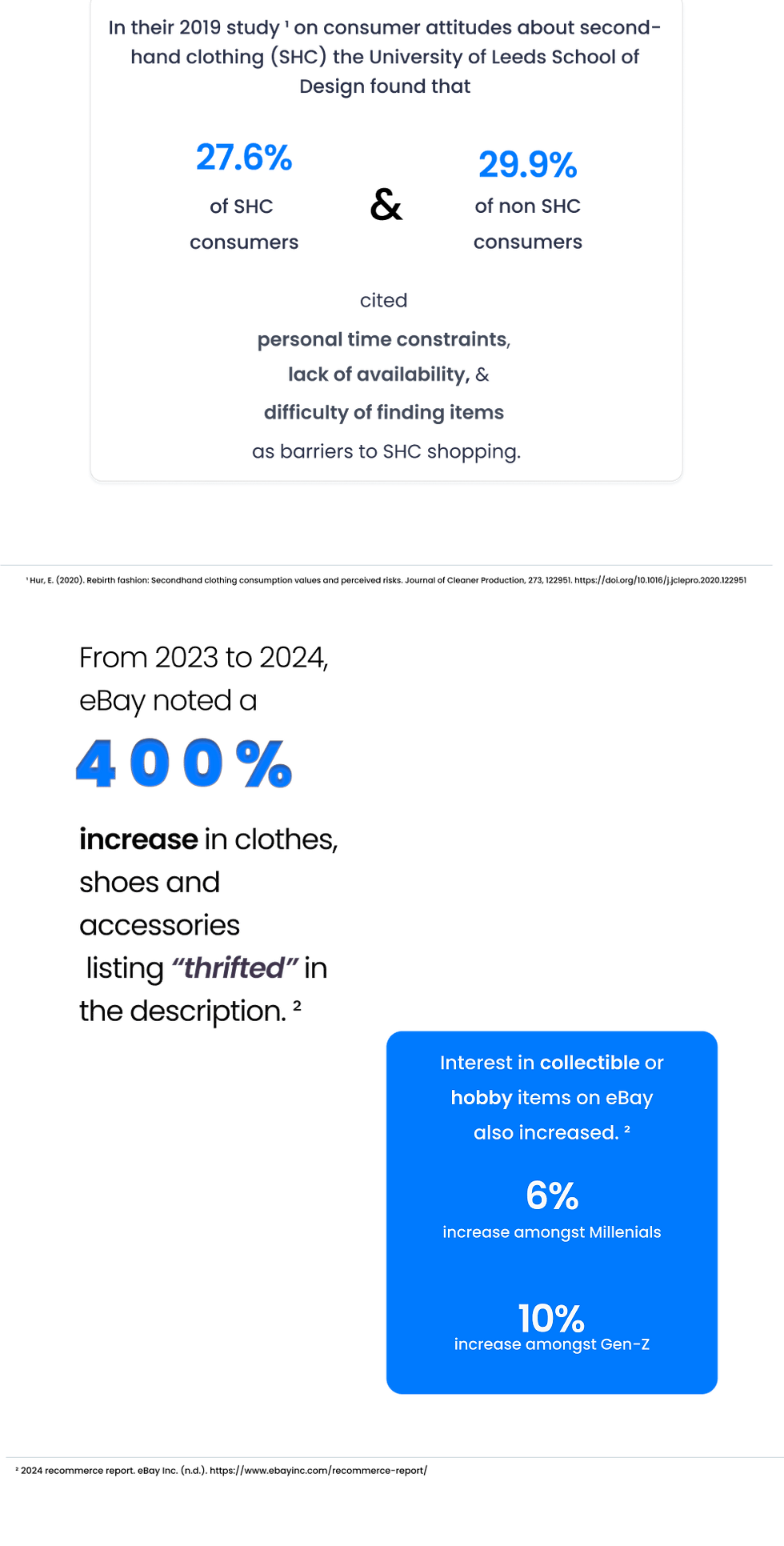
Overview
The Second Story is a mobile app designed to promote the sustainable shopping practice of buying second-hand goods by delivering a curated feed of pre-loved, locally available items to shoppers.
Local sellers upload images in-app, with relevant tags and pricing information. From there, our algorithm uses ConvNet technology and user profile data to reach consumers directly through their unique feed.
Objective
Encourage sustainable consumer behavior by removing common barriers to second-hand shopping experiences
Solution
Design an app that offers second-hand shoppers something not yet available- a quick and curated feed of locally available items and sales.
Through user research, I identified three key features needed for optimal user experience and engagement with the app.



Design Process

Discover
Before designing the app's features, I interviewed second-hand shoppers and vendors.
The app is designed for shoppers but I wanted to ensure my design was just as delightful for those selling items, as they would provide the content essential to the app’s existence.
My initial thought was to have an app that offered items available for in-app purchases, with an option for local pickup
and/or shipping.
After exploring the topic further, I found that both shoppers and vendors were satisfied with the current, established platforms available for online transactions.

Define
As a result of the increasing options available to them, many consumers shopping for second-hand goods experience a shared frustration with the amount of time required to review available items and find what they are looking for.
After reviewing my research, I centered the app's features around efficiently presenting listings of local items for sale. Users could use the app to see recommended yard sales or items for sale at vendors, then visit the listing's address to purchase.
I also discovered that some users wanted to visit whatever sales were closest to them and do so in the most efficient way. Users were motivated by location as much as the items available, as long as they had an average (or higher) perceived value.
For example, 3 of 5 shoppers interviewed cited a weekend routine of visiting local yard sales, which wasn't motivated by an essential need to purchase specific items but was an enjoyable hobby.
Though the premise is simple, this app offers something not yet available- a quick and curated feed of locally available items and sales that leverages technology to simplify what can be a frustratingly time-consuming and arduous process.
User Needs (Shoppers)
1.Reduce time spent finding infomation on local yard sales and antiques
2. Easily access saved items
3. Efficently plan routes for multi-destination trips
From these 3 key user needs, I planned corresponding features within the app
1. custom feed
2. favorites list
3. local map
user personas



Design
I presented my prototypes to peers and my instructor as part of a final project for a UX class. One critique I received was that the dark teal green color I had selected for my navigational elements didn't feel harmonious with the rest of the app. Based on the critique, I selected an off white color for those elements and noticed that this small change improved the visual experience of the app.

custom feed
Reduces cognitive load by presenting a streamlined, personalized list of options for users
The below video demonstrates how a user would interact with their curated feed within the app.
favorites list
Allows for users to quickly access a list of items they are interested in
The below video demonstrates a user's interaction with their saved favorites.
local map
Provides an additional, location-based mechanism for exploring local items
The below video demonstrates how a user could use the map to find items near them.
additional screens

